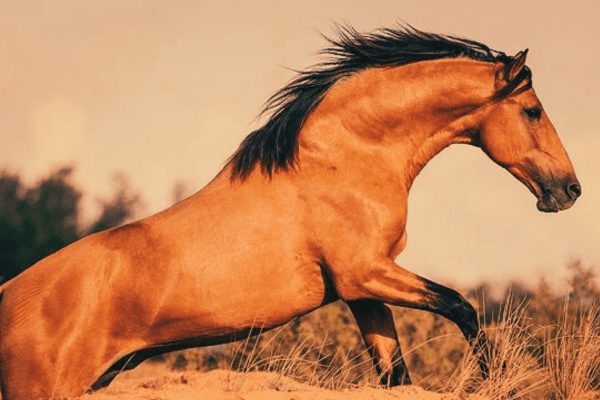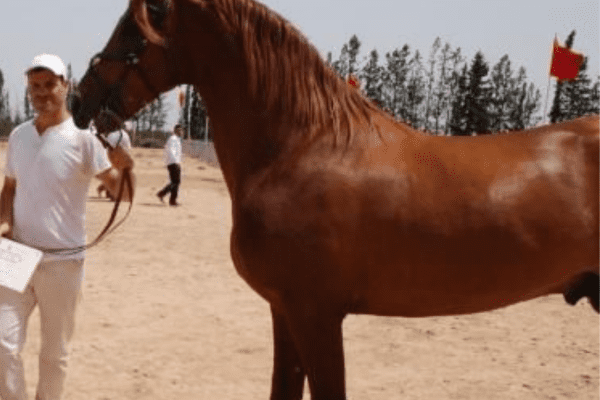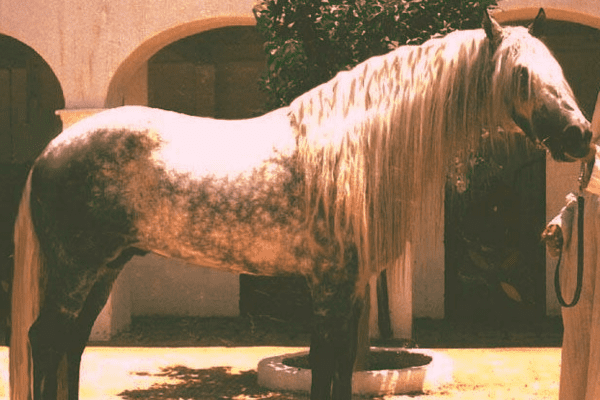The Barb horse, often referred to as the Berber horse, epitomizes the essence of North African equine lineage. Originating from the rugged landscapes of the Maghreb, this breed is celebrated for its exceptional stamina and robustness.
Deeply intertwined with the heritage of the Berber or Amazigh communities, the Barb has been instrumental in the development of numerous contemporary horse breeds across both northern and western Africa, showcasing its profound and enduring impact on the equestrian world.
History:
The Barb horse is a breed with an intricate past. Originating in North Africa and moving across to Europe for domestication, its presence can be found today as the basis for several modern equine breeds.
Misidentification in Europe.
Confusion With Arabians: Barbs were often mistaken for Arabian horses in Europe due to their similarities in size and being handled by Berber Muslims who spoke Arabic fluently. This error stemmed from both handlers speaking Arabic fluently as well as similarity in handler appearance.
Godolphin Arabian as an Example: An excellent illustration of this confusion is seen with Godolphin Arabian (commonly known as “Godolphin Barb”) from Tunisia being mislabeled an Arabian. This clearly demonstrates a common confusion between these distinct breeds.
Modern Breeding and Conservation
Primary Breeding Grounds for Barbs: Today, Algeria, Morocco, Spain and southern France serve as prime breeding grounds for this breed of bird.
Decreasing Numbers: Barbs have seen their numbers decrease due to economic challenges in North Africa.
Conservation Initiatives: To combat this problem, in 1987 Algeria saw the establishment of the World Organization of the Barb Horse to preserve and promote this breed of horse. Their efforts were acknowledged internationally when at the 2014 World Equestrian Games held in Normandy by the International Equestrian Federation they received an honor award.
Historical Influence and Legacy
Impact on Racing Breeds: The Barb is second only to Arabian in terms of global racing breed influence. Berber invaders first introduced these horses to Europe as early as the eighth century.
Development of Andalusian and Lusitano Breeds: Under Umayyad patronage on the Iberian Peninsula, Barb was instrumental in developing Andalusian and Lusitano breeds.
Historical References: Notable references to Barbs include Roan Barbary being owned by King Richard II of England and Henry VIII importing numerous Barbs into England.
The Barb in European Horse Breeding
Thoroughbred Breed Development: After the Royal Stables were disbanded under Cromwell, private owners in England used Barbs as part of a strategy to further advance Thoroughbred breeding.
Global Impact: The Barb’s genetic legacy can be seen across various breeds, such as Argentinian Criollo, Paso Fino, American Quarter Horse, Mustang and Appaloosa horses.
Recognition and Traits
Underappreciated Beauty: Although Barbs play an essential role, they are less well known than Arabians due to perceived differences in aesthetics.
Notable Characteristics: The Barb is known for its stamina, endurance and adaptability when living on limited resources. Prized for its strong body suitable for collection purposes as well as learning eagerness and gentle nature, its characteristics also make the Barb a prized pet.
Barbs Have Been an Important Part of Dressage Since 16th Century: Barbs have long been an important component of European dressage, due to their versatility and adaptability.


Characteristics and Temperament:
The Barb horse breed features a compact, muscular build with either a straight or slightly convex profile and usually stands 14.2- 15.2 hands (57 to 61 inches). One of its most notable characteristics is its stamina and resilience in harsh conditions – something which has made this breed highly prized throughout history as war horses.
Barbs are well-known for their lively yet manageable disposition. They exhibit a combination of intelligence and energy that enables them to learn quickly and adapt rapidly – traits which have made them not only ideal war horses but also reliable workhorses and competitive sport horses.
Cultural and Historical Significance:
North African culture reveres the Barb horse as more than just an animal; it stands as an icon for strength, endurance and the spirit of its people. This breed has long been involved in battles, exploration and trade – not to mention celebrations and festivals that feature Barb horses showcasing their beauty, agility and close bond with riders.
Preserving Heritage: SBHA and its Role in Protecting a Historic Breed
Established in 1972, the Spanish Barb Horse Association (SBHA) embarks on an honorable quest to conserve and safeguard a vital aspect of equine heritage. They stand as one of the primary advocates for maintaining Spanish Barbs, which represent centuries of history while embodying grace and resilience through time.
The SBHA stands apart from traditional breeding practices by supporting and encouraging selective breeding of horses that exemplify characteristics associated with Spanish Barb type horses in North America. This meticulous approach to preservation is key in protecting an endangered and historically significant breed.
At the core of SBHA efforts lie several foundation strains of Spanish Barbs, each with their own history and lineage. These foundation strains are highly valued not only for their lineage and history but also due to their purity due to centuries of geographical isolation which has effectively protected them from genetic intermixing common among feral populations, thus maintaining their genetic heritage and keeping these special breeds distinct.
Wilbur-Cruce horses are an example of such strains; these horses are direct descendants of Spanish missionary horses brought to Arizona during the late 1600s by missionaries from Spain, providing us with living links back through time. One remarkable aspect of Wilbur-Cruce horses is that research has confirmed their genetic relationship with North African Barbs and Old Spanish breeds, further validating historical authenticity as well as expanding our understanding of equine evolution.
Through its tireless preservation efforts, the SBHA not only protects a rare equine lineage but also keeps alive the history and stories behind this historic breed. Their efforts serve as proof of how important it is to keep historical breeds alive for future generations to enjoy and learn from their legacy.



